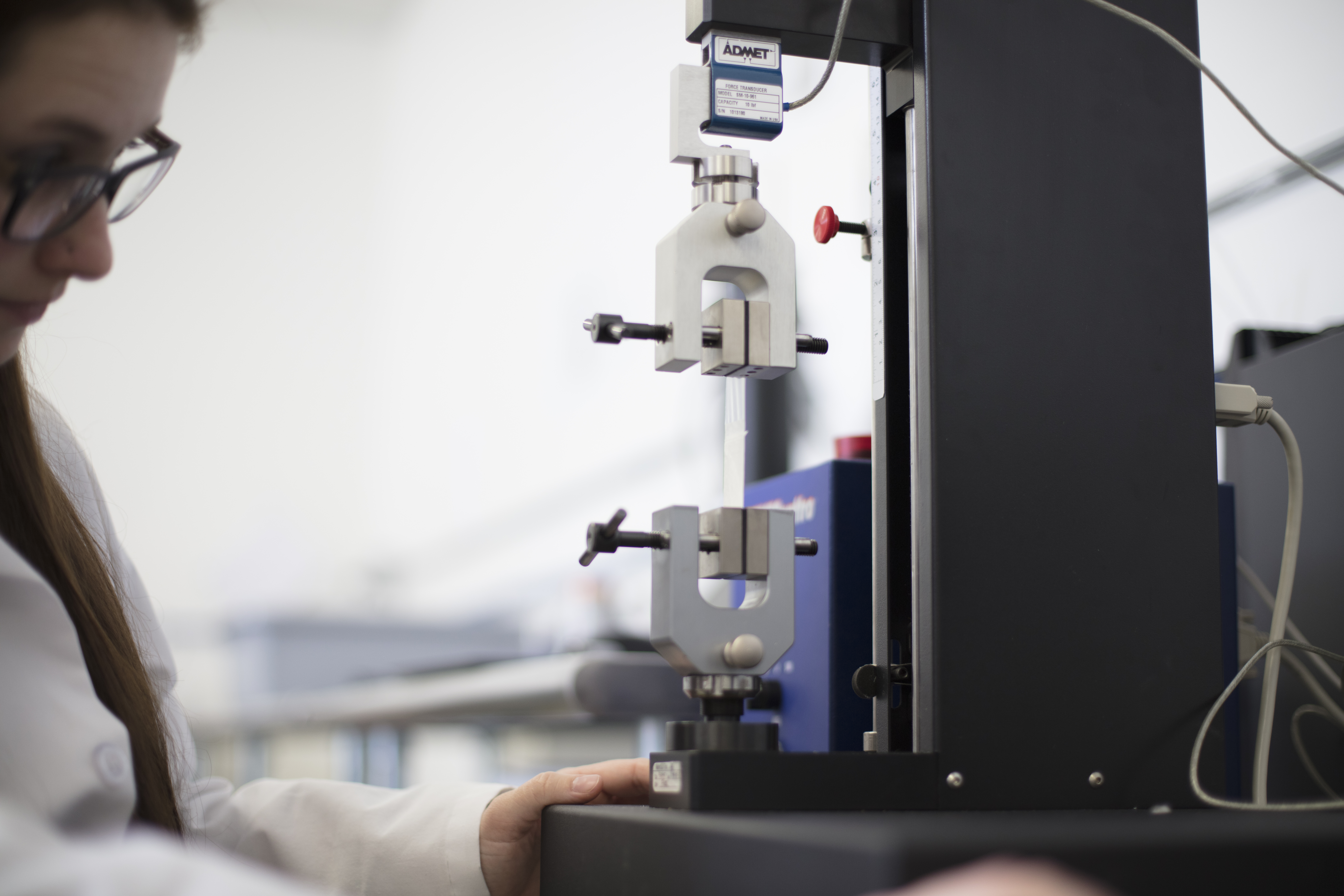
Tensile Strength Test
The ASTM D882 standard is intended to quantify the tensile strength of a plastic material. It is conducted by cutting a 1″ wide specimen from the material. The specimen is loaded into a tensile tester with one half in the upper jaw and the lower half in the bottom jaw. The tensile tester then pulls the material apart until it snaps. A load cell measures the force and distance to produce such statistics as yield strength, breaking strength, modulus of elasticity, and others. Materials can be measured in both the machine direction and cross direction.

Industry Application
Tensile strength is an important physical properties specification. It is used for quality control and monitoring of production processes which make the flexible plastics used in the construction of sterile barrier packaging systems. It may be furnished upon a technical data sheet defining the properties of a given material. It is also a routine feature of the certificate of conformance for each batch of film when it is produced and tested.
Frequently asked questions
What does tensile strength test do?
Tensile strength testing coves the determination of tensile properties of plastics in the form of thin sheeting and films less than 1.0 mm in thickness.
What is ASTM D882 tensile strength test typically used for?
Tensile properties determined by this test method are of value for the identification and characterization of materials for control and specification purposes. Tensile properties can be utilized to provide data for research and development and engineering design as well as quality control and specification.
What data does tensile strength testing give?
Tensile strength testing outputs four values: Auto elongation at break, extension at end of test, load at break, and maximum load.